"Where there is no patrol car, there is no speed limit." -Peter Beckmann
You've of course heard the news that the OPERA collaboration in Italy has measured what appears to be neutrinos moving faster than the speed of light.
The way they did it was pretty straightforward. Shoot a pulse of protons moving at ultra-high energies -- at speeds indistinguishable from the speed of light -- into a fixed target.
They'll produce all sorts of high energy particles: baryons, mesons, electrons, positrons, muons, and more. But don't just aim them at a detector; shoot them into the Earth itself.
All the baryons and mesons, all the matter and antimatter, will be blocked by the intervening ground. Everything, that is, except the neutrinos.
Because they interact so very rarely, the neutrinos will pass -- virtually untouched -- through the hundreds of miles of Earth, towards your underground neutrino detector.
And once arriving there, you can detect some tiny fraction of them: maybe just 1-in-1016 or so.
Good thing for you that you made so many of them.
Over the past two years, OPERA made on the order of 1020 neutrinos, detecting about 16,000 of them. The question, of course, is were they speeding or not?
They initially emitted pulses of protons that were about 10,500 nanoseconds in length, and tried to match that up with the neutrinos they detected. Based on the distance from the source to the target, it should have taken a certain amount of time.
And based on their understanding of their electronics, there should have been an offset of 988 nanoseconds.
But what they found was that, on the whole, the neutrinos had an offset of 1048 nanoseconds, which means they took 60 nanoseconds less time than they were supposed to! And this was in an experiment with a claimed uncertainty of just ten nanoseconds, so this result is well outside of their reported experimental error.
So what happened? As I went through in great detail, there were four main possibilities.
- There was a systematic error in their measurements, and their measurements are simply systematically off by 60 nanoseconds (or thereabouts).
- The errors are much larger than they claim, and they're not actually measuring the arrival time of these neutrinos to their claimed accuracy.
- There's a bias in the detection of their neutrinos, and the pulse shape of the arriving neutrinos doesn't match the pulse shape of the things that created them. Or...
- They really did break the speed of light, and the laws of physics don't work the way we think they do, and in your face, Einstein!
Of course, if you really want to believe in that fourth possibility, you had better go and make sure that you didn't make a mistake, and rule out those first three possibilities.
The first one's going to be hard to rule out, and will likely take either the OPERA team finding their own error (or releasing the full details of their methods to the world), or another experiment replicating theirs and confirming it.
But -- and here's the awesome news -- if the culprit is either the second or (as I've guessed) the third options, OPERA is performing a new test where they should figure it out for themselves!
How so? Let's recap one of the things that can go wrong when you design an experiment the way OPERA did, and then we'll tell you how they're going to fix it!
When you start with an initial set of particles that are spread out over some large amount of time (or distance), you should still know where they'll all be at some later time.
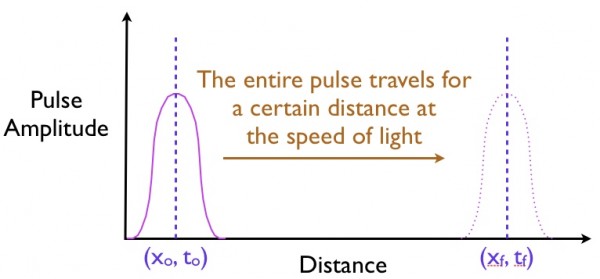
After all, they're moving at speeds indistinguishable from the speed of light! If they move at the speed of light, then they should arrive at their destination -- a known distance away -- at a very specific time!
The problem, however, arises from the fact that you're not detecting all of the particles at the end.
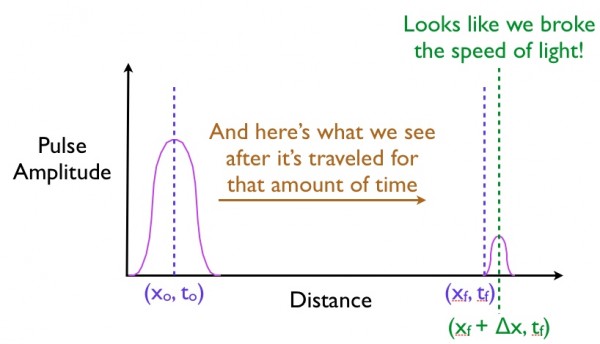
In fact, you're only detecting a tiny fraction of these particles. And if the ones you detect are -- in any sort of way -- biased, whether towards higher energies, earlier times, or any other fathomable way, you won't observe an average speed-of-flight equal to the actual speed of flight.
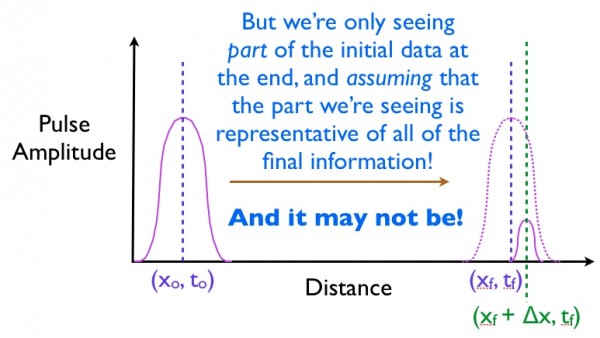
And all of this happened because of the big spread of your initial pulse.
So what OPERA is going to do over the next few weeks -- and it should only take a few weeks to observe the dozen-or-so neutrinos necessary to test this -- is to change the initial pulse shape. Rather than the 10,500 nanosecond-wide pulse, they're going to make the pulse only 1-to-2 nanoseconds wide!
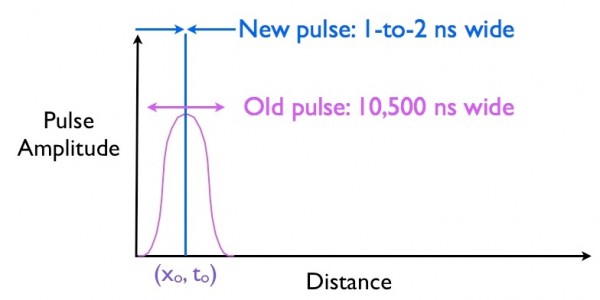
You need, of course, a great number of these pulses in order to get the 1016 initial protons necessary to make one neutrino show up in your detector.
But that's okay; they're sending these 1-2 ns wide pulses every 500 ns!
This "space-between-pulses" is sufficiently large that, when you do detect a neutrino in your detector, you know which pulse it came from!
And because you know the initial time of the pulse so precisely well, you know -- equally as precisely -- when that pulse ought to arrive in your detector!

And now, there are really only three possibilities for what they'll see. The first one is that OPERA may find that they've underestimated their error in their experiment, and will see that the neutrino-arrival-time is not as precise as they had claimed.
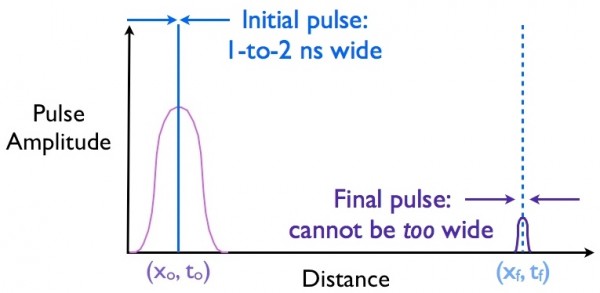
They will certainly have a spread in the arrival times of their neutrinos. If the spread is more than about 8-to-10 nanoseconds, then their uncertainty is much greater than the initial claim was. If the spread is on the order of 30 nanoseconds or more, the initial claim is totally invalidated, and the actual errors are much greater than was previously reported.
This is a very good check, though, because if the spread of these neutrinos comes in to be a small value, they can rule out option #2 -- large arrival-time uncertainty -- as the culprit.

Once they've nailed down a narrow spread in time-of-flight for these neutrinos, they may also find that they arrived when they were supposed to. (Or, if not, that they were early by much less than 60 nanoseconds.)
This is another great check, because if the neutrinos do arrive when you expect them tom or if they do anything other than arrive 60 ns early, you know that there was a bias in your detection of the earlier (10,500 nanosecond) pulse.
But there is one more possibility.
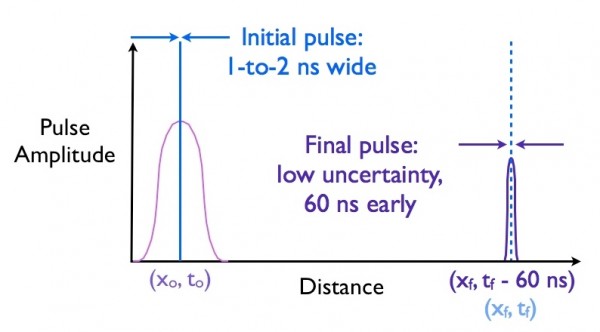
OPERA could see -- in the detector -- that a narrow, low-uncertainty pulse arrives 60 nanoseconds early. This is what they'd like to see, and that would not only rule out both options #2 and #3, above, it would demonstrate that their earlier analysis was very good!
If this happens, the only possibilities left are that you have a systematic uncertainty in your timing measurement, or these neutrinos are breaking the speed of light.
The team has stated that they're going to perform this test before all of the members will sign their names to the paper, and submit it for publication. It's a great idea, and we should await the results -- in just the next few weeks -- with bated breath.
But you've got to wonder: why didn't they do this test before releasing this result to the world?

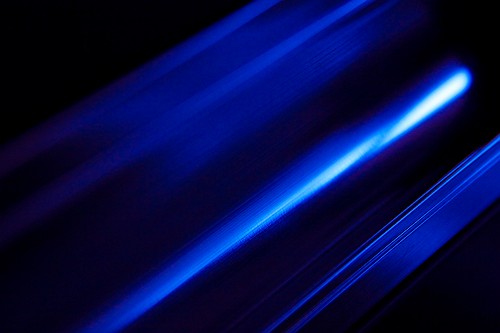
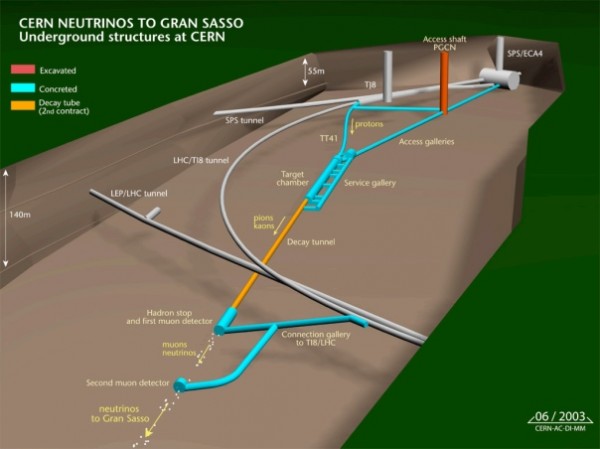

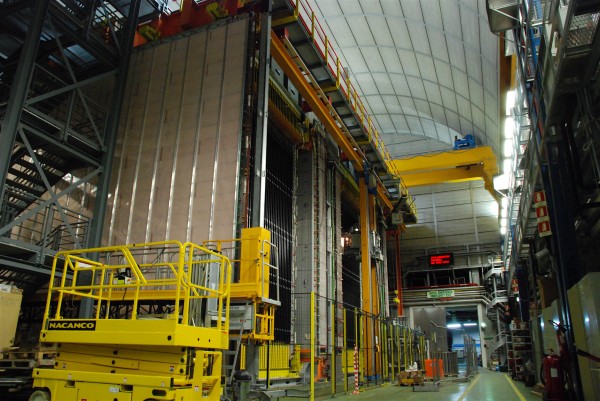
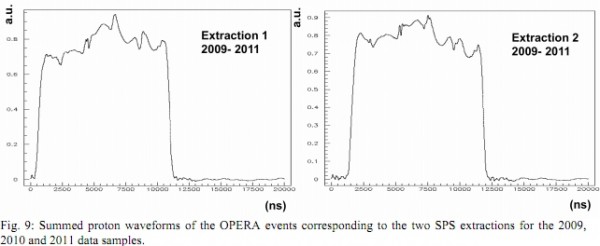


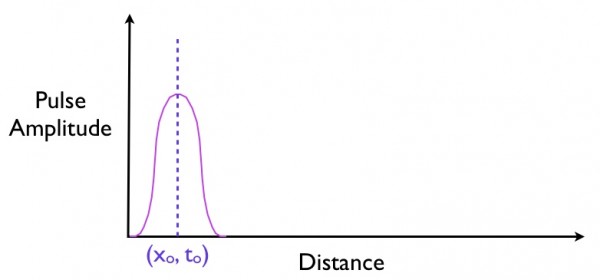
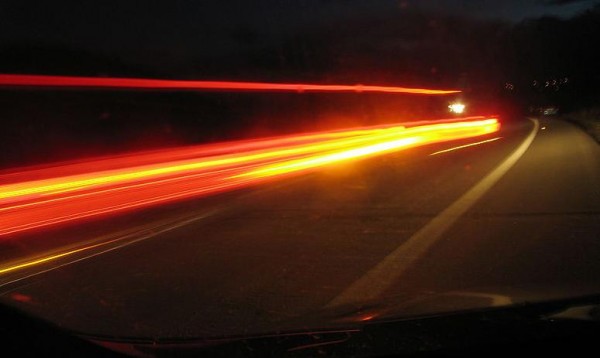
Thanks, that's a great explanation of the new experiment.
And for the last question - politics and/or publicity. Unfortunate, and I'm kind of angry about that.
There's always one more check one can perform, and always some collaboration member (usually German) who will argue to do this check, and another collaboration member (usually Italian) who will argue not to do it so you can publish sooner. Of course in practice one has to split the difference and do a reasonable number of checks. Doing every check that everyone can think of would take an unreasonably long time. Personally I think they did a reasonable amount of due diligence to check their result before publication.
Also the philosophy of "blind analyses" is to do all these checks before opening the box (which is what they did), and report what you find after opening the box, even if is surprising. Searching for new effects and doing new checks after opening the box creates bias. You will find new effects and new checks, and will tend to consider those that will drive your result to your expectation. This is biased and scientifically incorrect. You should perform a new experiment, as they are proposing, rather than massaging the data. I look forward to this new result.
I agree with Bob. The main purpose of the whole experiment was not to measure travel time of neutrinos. The real purpose was to measure other stuff and this travel time was an add-on.
They have to send (and keep track of) 10,000 times more pulses to get the same number of neutrinos.
No one expected faster than light neutrinos (and most still don't).
From Prof. Matt Strassler's announcement:
"OPERA didnât want to do this because it comes at the cost of a large reduction in the sheer number of neutrinos, and this affects OPERAâs main research program (which involves neutrino oscillations)."
Thanks Ethan for the awesome post!
In case the tests show that the original result was flawed, I hope it does not have any negative impact on funding.
My question would be how they are so exacting as to the actual distance involved with the transmission. If the distance is wrong, so is the assumed velocity, but I would think this would be all too obvious.
Perhaps they hadn't thought about it yet. But if they're wrong it will look sort of foolish. It's unfortunate but, mistakes in Science are not uncommon. I agree that I seriously hope this doesn't negatively impact their funding. Very nice post, thank you.
Isn't "neutrinos will pass -- virtually untouched/uneffected" a not fully proved concept? , can earth's matter have deviated reading on detectors? most possible some parameter is missed.
Nice article.Thanks.
I agree with Bob as well. Come on, OPERA has a multistrand research program and this measurement isn't the main one. Doing as they are will mean that they can't do the main measurement as they won't have enough flux to do so. OPERA is NOT a speed of light experiment - it isn't what they are funded to do, or what they are accountable for to the various governments. It's an add-on, an interesting one, but not the main result.
Besides, I do wish that the implication given here and other blogs was not that "they came out and stated that they had disproven Einstein". They didn't - they stated (clearly) that they had "found a discrepancy which they couldn't explain after doing the checks required before opening the blind analysis box, and would like others to help check, as they would continue to do". The seminar did not even mention speed of light violation. That is the way to do proper science and I think, Ethan, that you and others are kicking back far too hard over it.
And how can it have negative impact on funding? I really don't understand that. This is how science is done. It's an unexpected result, so they ask for everyone else to look. If the current test disproves their previous result they will state this, try to explain the discrepancy, feel a bit disappointed (probably) but the conclusion will be whatever the data states it should be.
Dr. Siegel,
You wrote:
"...based on their understanding of their electronics, there should have been an offset of 988 nanoseconds."
Later you said:
"But what they found was that, on the whole, the neutrinos had an offset of 1048 nanoseconds, which means they took 60 nanoseconds less time than they were supposed to!"
Here in San Diego, 1048 is larger than 988, even if those numbers are really really tiny nanoseconds. What have I missed?
Look at http://www.newscientist.com/article/dn21093-fasterthanlight-neutrino-re…
IF they get the FTL result, I would be interested in seeing the experiment redone with a more distant receiver. I know that's probably pretty expensive, but it seems like shooting the tau neutrinos toward Illinois, or IceCube, or Sudbury shouldn't be a gigantically expensive option considering the importance of such a result.
antoniseb
Apart from the problem that Fermilab, the Antarctic or Sudbury are not on the same line as the neutrino beam, which is not movable. You'd nee d an entirely new beam, pointed to one of these detectors which would be extremely expensive. Mind you, such a beam might be funded given the importance of the result. Realisitically, I think what will happen is that OPERA will do what they can, MINOS and T2K will try to reproduce the measurement on the timescale of few years. I'd like to see OPERA put a new detector somewhere else on the same line (which would cost less than a new beam) to make sure that the effect is scaling properly.
Left Coast Bernard @10,
Go to the OPERA preprint here: http://arxiv.org/pdf/1109.4897v1
Specifically, go to table 1. You'll find that the expected offset is -987.8 ns, while the actual one that fits the data is -1048.5 ns. I thought that describing the offset by giving a magnitude and mentioning that it was faster than light made it clear, but perhaps putting in the signs explicitly helps you see that it's 60.7 ns early.
Or, as you might put it, here in Portland, -988 is larger than -1048.
Found this on the social web, dunno what dvice is, and since the relativistic clock explanation hasn't been mentioned here I'm guessing that it's a thing which everyone involved in such measurements is aware of. But please confirm that the link gives bogus info.
Ok, URL didn't stick:
http://dvice.com/archives/2011/10/speedy-neutrino.php
Ethan, your opening quote from Peter Beckmann: did you mean the late Petr Beckmann (Einstein Plus Two fame)?
:)
You left out one possibility, namely that the baseline distance is not measured correctly. (Unlikely, but relative to the unlikelihood of neutrinos actually being faster than the speed of light, needs to be considered.)
Also, doing this short-pulse experiment requires CERN to change what they are doing, not what OPERA is doing. It is famously difficult (for very good reasons) to get an accelerator division anywhere to change the beam procedures on request. Pure unadulterated speculation: part of the reason for not doing this check in the first place before release may well have been that they were told "no", and only by releasing the result could the OPERA collaboration generate the necessary motivation/pressure to get the beam width changed.
Ethan,
I am sure to change the pulse and repeat things, there is funding required. And I guess such funding doesn't come easily unless you get the publicity to push things. I don't see a problem with the OPERA approach. They have taken a big risk - if their results hold up, the rewards are somewhat obvious; so is what they lose if the results can't be repeated.
I personally think, based on my knowledge of statistics and what OPERA reported earlier, their results will hold up. But no point arguing this; we'll see.
Great explanation....would be neat if Discovery channel or NOVA would send a camera crew and do a show on this.
What "risk" did they take? They published their results and said they didn't know if they were correct or not. What else could they do? How is that taking a risk?
A risk that someone who doesn't know anything about how science is done will point at them and laugh and say nah nah nah, you got something wrong.
The research is being done because it is something that is worth knowing and there isn't another way to figure it out. The funding this is taking is chump-change next to the trillions being squandered on war and financial bailouts. Why is bailing out rich bankers worth doing? Why is the war in Iraq and Afghanistan worth doing?
Seventy years ago the Germans, the French, the Italians and other Europeans were fighting a war that killed tens of millions. Any use of funding is better than that.
Ethan
Thanks for keeping us updated on this important experiment. All your blog posts are excellent; I really appreciate what you do here.
Thanks especially for explaining the new experiment being prepared. It's amazing that the OPERA scientists can do this follow up experiment; they are putting up. Well worth waiting only a few weeks.
Forgive the laymans question here:
My understanding was that relativity means that you can't tell if two events separated by some distance occurred at the same time or not. The timing of the events depends on your frame of reference.
So how is it possible to do a time of flight measurement when the start and end detectors are separated by some distance?
My understanding of relativity in this case obviously needs recalibrating!
@23
The speed of light as measured by any observer in his own reference frame (inertial or not, rotating or not, simultaneous with another reference frame or not) is c for that medium.
You are incorrectly assuming two frames of reference for this experiment. There is only one.
The OPERA experimenters measured the speed of the neutrinos from their one reference frame and expected to get a measured value less than the speed of light c in that frame (or from any frame of reference if they choose to, they didn't).
Think of the OPERA apparatus (from CERN creating neutrinoes to Grand Sasso detecting neutrinos and all the interveining space) as one giant experimental apparatus that is in one reference frame. Both end of the experiment are in one reference frame because the distance between CERN and Grand Sasso does not change during the experiment. It doesn't change for during nanoseconds of each neutrino pulse's travel and it doesn't change during the years of the experiment. No one is claiming any geologically significant activities or quivers during the travel of a neutrino from one end of the OPERA apparatus to the other. Thus the paradoxes of simultaneity do not apply in this experiment.
Well, not 100% correct, there.
The acceleration in the two separate locations will be *slightly* different. The vector of forces on a rotating body are different, though this isn't a GR effect, but may change the geodesic the item follows.
An effect EXTREMELY tiny, and reducible even if it's possible to discern with the precision levels used by an approximate correction factor.
@ Mike
It's not that you can't tell, it's that different observers will see the events happening at different times -- some will see A before B, others B before A, and others see A and B happen at the same time -- and all are correct. So you can't say universally that A and B happened at the same time, but for a given observer it's perfectly possible to say this.
Also, if you know things about other observers like their velocity and acceleration, then you can also calculate what they would see and this should agree with their observations. Relativity only means you have to give up the notion of a global total ordering of events, not that you can't still make meaningful timing measurements.
The emitter and detector are not the same reference frame (for example they're both accelerating at slightly different rates due to gravity), but that's okay, because by understanding the difference the effect on the experiment can be determined.
And since this is the speed of light we're talking about here, if any observer anywhere sees something moving super-luminal then that's a problem for Relativity.
I'd never heard of this 'apparent shifting effect' before reading it here. Very elegant answer. Stats can be so cruel...
But can it explain a complex wave pattern being duplicated by the miniature detected version?
There may be a fourth option, the one I'm rooting for: they will see a decidedly bimodal arrival time distribution.
Yes the neutrino-faster-than-light experiment will NOT stand. So "If nothing travels faster than light then Einstein's theory is right!" Nice rhyme... most mediocre minds (i.e. just about everyone in today's world of physics) would dance to the line. A dance of the non-thinking crowd!
Reality is more complex -- a COUNTER-EXAMPLE exists that PROVES that (though Einstein's postulates are correct), Einstein's claim of having derived the Lorentz transformations is wrong, yes a COUNTER-EXAMPLE -- and at least one Nobel prize winner takes this realization seriously.See http://physicsnext.org/ for details, a very simple read, but majority be warned... facing physics reality regarding the foundations could disturb a mediocre mind and make you react emotionally...for example, Howard Georgi got very angry!
Dumb question from someone with an old unused science degree: Are all neutrinos the same? Or do they differ in energy, speed and ease of detection? If relativity is right, would low-energy neutrinos travel considerably faster than light? Are neutrinos the hypothetical tachyons people used to talk about?
Another thought from someone with a rusty BA: What's the assumption regarding the speed of light through the earth that limits the speed of a normal particle? Seems to me the speed is set by the permeability and permittivity of the medium (earth's crust) rather than of free space. Any normal particle that's faster than light in a medium slows down through release of cerenkov radiation. Could the 60-nanosecond difference be explained by lightspeed in the crust versus speed in free space? Who's measured speed of e-m radiation through that particular dirt and rock?
Vis a vis your question about neutrinos: this is one of those particles that was theorized about before it was found. Three different types were eventually discovered. Check out Wikipedia for the relevant details.
http://en.wikipedia.org/wiki/Neutrino
Neutrinos react only to the weak nuclear force, hence are able to pass through, say, a hundred miles of lead without "slowing down" or reacting whatsoever. (I believe the neutrino phenomenon is what has put physicists onto what may be the wrong track, so far as Dark Matter goes -- looking for something that reacts not even to nothing. But that's another story).
Because of the infinitismally small mass nuetrinos carry, they can oscillate between different "flavors." This was the source of the famous "solar neutrino" problem of a few years back, when far less than the requisite number of these particles were found to be emanating from the Sun. As it turned out, the tests weren't picking up the right amount because those neutrinos had morphed to a different "flavor" by the time they reached our orbital remove, giving the deceptive impression that internal solar activity had banked way back (if it had, I guess Global Warming would be a good thing!).
As far as I'm concerned, there is no way for any particle, let alone one with mass, to travel "faster than light." But the Opera Collaboration continues, as it should, and further results will soon be made known.